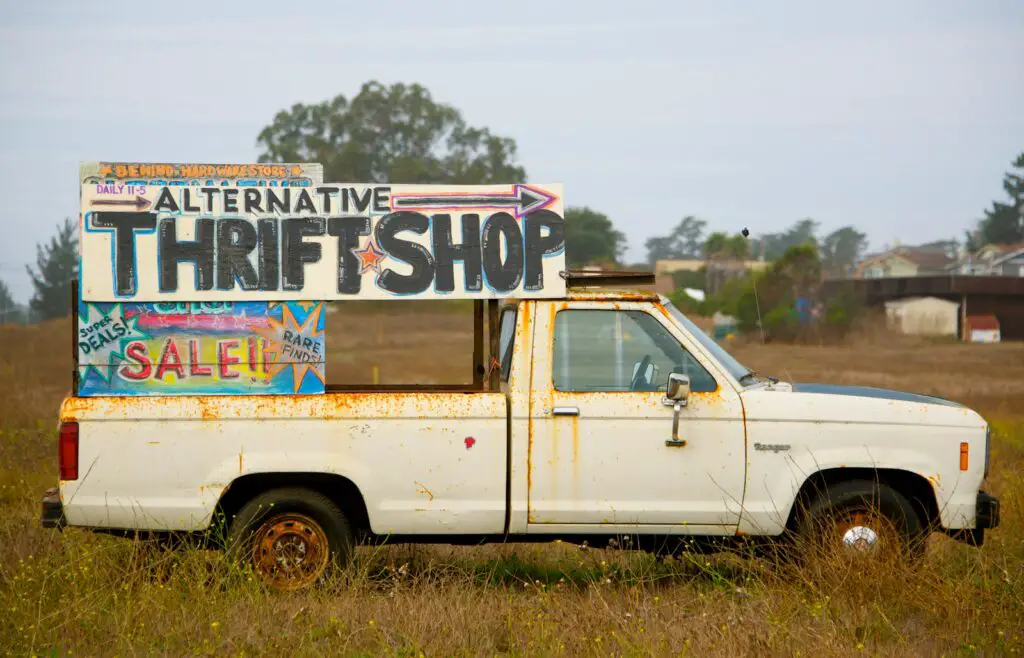A rummage sale is at the heart of community spirit. They beckon with hidden treasures and unique discoveries, drawing bargain hunters and vintage enthusiasts. These events offer a treasure trove of unbeatable finds, from vintage clothing to distinctive home decor pieces. Join us as we embark on a journey into rummage sales, unraveling tips and tricks to elevate your thrifting experience.
Key Takeaways
- Prepare Your Items: Clean and organize items you plan to sell to attract more buyers and potentially increase sales. (Referencing “Preparing Your Items for Sale”)
- Strategic Display: Arrange items neatly and creatively to make them more appealing to shoppers, increasing the likelihood of purchases. (Referencing “Organizing and Displaying Sale Goods”)
- Effective Marketing: Utilize social media, local advertising, and signage to reach a broader audience and drive more traffic to your rummage sale. (Referencing “Marketing Your Rummage Sale Effectively”)
- Engage Customers: Interact with shoppers, offer deals, and create a welcoming atmosphere on the day of the sale to encourage purchases and enhance the overall experience. (Referencing “Day of the Sale Strategies”)
- Fundraising Potential: Explore the opportunity to raise funds for a cause or organization through rummage sales, combining community engagement with charitable giving. (Referencing “Exploring Fundraising Through Rummage Sales”)
- Reflect and Improve: Evaluate the outcomes of your rummage sale, identify areas for enhancement, and apply lessons learned to future sales for continued success. (Referencing “Wrapping Up Your Rummage Sale”)

Unpacking the Term “Rummage Sale”
Definition
A rummage sale refers to a community or charity event where people sell new or used items at low prices. Rummage sales typically aim to declutter homes and raise funds for various purposes.
Informal Nature
Rummage sales are known for their casual and informal atmosphere. At these events, individuals can browse through a variety of items, from clothing to household goods. These events often foster a sense of community engagement and bargain hunting.
Nonprofit Support
Nonprofit organizations frequently organize rummage sales as a way to generate revenue to support their programs and initiatives. By selling donated items at affordable prices, these organizations can fundraise effectively while providing the community with access to inexpensive goods.
Historical Roots of Rummage Sales
Origin
Rummage sales originated in the United States around 1858. Churches and charitable organizations organized these sales to raise funds for various causes.
Evolution
Initially, rummage sales primarily featured second-hand goods. Over time, they expanded to include various items like clothing, books, and household goods. Community involvement grew as people saw the benefits of recycling and reusing items.
Significance
Rummage sales gained popularity during the Great Depression when families sought affordable goods. They provided a platform for individuals to earn extra income by selling unwanted items. These events fostered a sense of community spirit and resourcefulness.
Preparing Your Items for Sale
Organizing Efficiently
When preparing for a rummage sale, plan and declutter your stuff. Sort items into categories like clothes, dishes, toys, and electronics to make browsing easier.
To ensure a smooth sale day, create a detailed list of all items you plan to sell. This list will help you keep track of what’s available and assist customers in quickly finding specific items.
Cleaning and Pricing
Before the sale, thoroughly clean all items to attract buyers. A little effort can significantly increase the perceived value of your items.
When it comes to pricing, research similar items online or in local stores to determine fair prices. Clearly label each item with its price using stickers or tags for easy identification.

Organizing and Displaying Sale Goods
Sorting Items
When preparing for a rummage sale, begin by sorting items into categories such as clothing, electronics, and household goods. This helps shoppers easily navigate through the displayed goods.
Creating Eye-Catching Displays
Arrange items neatly on tables or racks to attract more customers. Use colorful tablecloths or display stands to make your sale visually appealing.
Labeling and Grouping
Label each item with clear prices to avoid confusion during transactions. Group similar items together in designated sections to streamline buyers’ browsing experience.
Marketing Your Rummage Sale Effectively
Social Media
To reach a wider audience, utilize social media platforms such as Facebook, Instagram, and Twitter. Post engaging content about your rummage sale, including dates, locations, and featured items. Interact with potential customers through comments and direct messages to generate buzz.
Eye-Catching Promotions
Create eye-catching flyers and posters to attract attention. Use bright colors, bold fonts, and clear information about the sale. Include enticing details like discounts, exclusive items, or special offers to entice people to visit your sale. Distribute these materials in high-traffic areas like community centers, grocery stores, and local businesses.
Promote your rummage sale through various channels to maximize exposure. Partner with local organizations or businesses for cross-promotion opportunities with the community. Consider offering early bird specials or hosting a preview event for loyal customers. Remember to emphasize the unique aspects of your sale to stand out from competitors.
Day of the Sale Strategies
Efficient Management
Ensure all items are organized and priced correctly on the day of the rummage sale. Assign specific roles to volunteers for smooth operations. Create a layout plan to streamline customer flow and optimize space usage.
Setting Up Sale Area
To facilitate easy navigation, categorize items logically (e.g., clothes, electronics). Utilize tables, racks, and signage for clear sections. Group similar items together for a cohesive shopping experience.
Implementing Payment System
Having a reliable payment system is crucial. Accept cash, but also consider digital options like mobile payment apps or card readers. Designate a central checkout area with sufficient change and receipts.
- Organize cashier shifts to prevent long queues.
- Provide bags or boxes for purchased items to enhance customer experience.

Exploring Fundraising Through Rummage Sales
Effective Fundraising
Rummage sales serve as effective fundraising events by leveraging donations from the community. These events rely on volunteers to organize and run them smoothly.
Rummage sales offer charities a platform to raise funds through donated items sold at affordable prices. The community’s support in providing goods for sale contributes significantly to the success of these fundraising events.
Benefits of Rummage Sales
One key benefit of using rummage sales for charitable causes is the ability to raise funds while simultaneously promoting recycling and reuse. By giving pre-loved items a new home, these sales generate revenue and reduce waste.
Another advantage is the community engagement aspect. Rummage sales bring people together, fostering connections and a sense of unity in working towards a common goal of supporting a charitable cause.
Maximizing Profits
To maximize profits through fundraising rummage sales, organizations should focus on marketing strategies such as social media promotion, flyers, and local advertising. Creating an enticing display and organizing items neatly can attract more buyers and increase sales.
Moreover, pricing items competitively yet reasonably can encourage more purchases, ultimately boosting the sale’s overall proceeds.
Wrapping Up Your Rummage Sale
Cleaning Up
After your rummage sale’s hustle and bustle, it’s time to tackle the aftermath. Gather all the unsold items and sort them into bags for donation or disposal.
It is crucial to leave the sale area tidy for a successful wrap-up. Ensure all tables, signs, and displays are taken down and stored properly.
Evaluating Success
To gauge the effectiveness of your rummage sale, take a moment to reflect on its outcomes. Review how much money was raised, the turnout of attendees, and which items sold best.
Make note of any challenges faced during the sale. Identify areas for improvement such as pricing strategies or promotion techniques.
Future Improvements
Use the insights gained from this sale to enhance future events. Adjust your pricing based on what sold well and what didn’t.
Consider different ways to promote your next rummage sale, such as using social media or partnering with local businesses. Engage volunteers early on to help with setup and organization.
Closing Thoughts
You’ve learned the ins and outs of hosting a successful rummage sale. From understanding the term to mastering marketing strategies, you’re now equipped to plan and execute your own profitable event. Preparation is key, so take the time to organize, price, and promote your items effectively. On the day of the sale, greet customers warmly, showcase your goods attractively, and be ready to negotiate prices.
Now that you have all the tools, it’s time to implement your knowledge. Host a rummage sale in your community, declutter your space, or even raise funds for a cause you care about. Get started today, and watch as your efforts benefit you and create a positive impact on those around you.
Frequently Asked Questions
What is the significance of understanding the term “Rummage Sale” and how it works for making lots of money?
Understanding the term “Rummage Sale” helps you grasp its concept and purpose, ensuring you can effectively plan, organize, and execute a successful sale event.
How can I prepare my items for a rummage sale?
Prepare your items by cleaning them thoroughly, pricing them competitively, and categorizing them neatly to attract potential buyers and maximize sales.
What are effective strategies for marketing a rummage sale?
Promote your rummage sale using social media platforms, local community boards, and flyers. Highlight unique or valuable items to generate interest and attract more attendees.
How can I optimize my display of goods during a rummage sale?
Organize items by category, create visually appealing displays, use signage for pricing and information, and ensure easy access for shoppers to effortlessly browse through the goods.
What should I focus on during the day of the rummage sale: cashiers, volunteers, money, and donations?
On the day of the sale, prioritize customer service, maintain a tidy setup, be prepared to negotiate prices, and consider offering discounts towards the end of the event to boost sales.















Leave a Reply